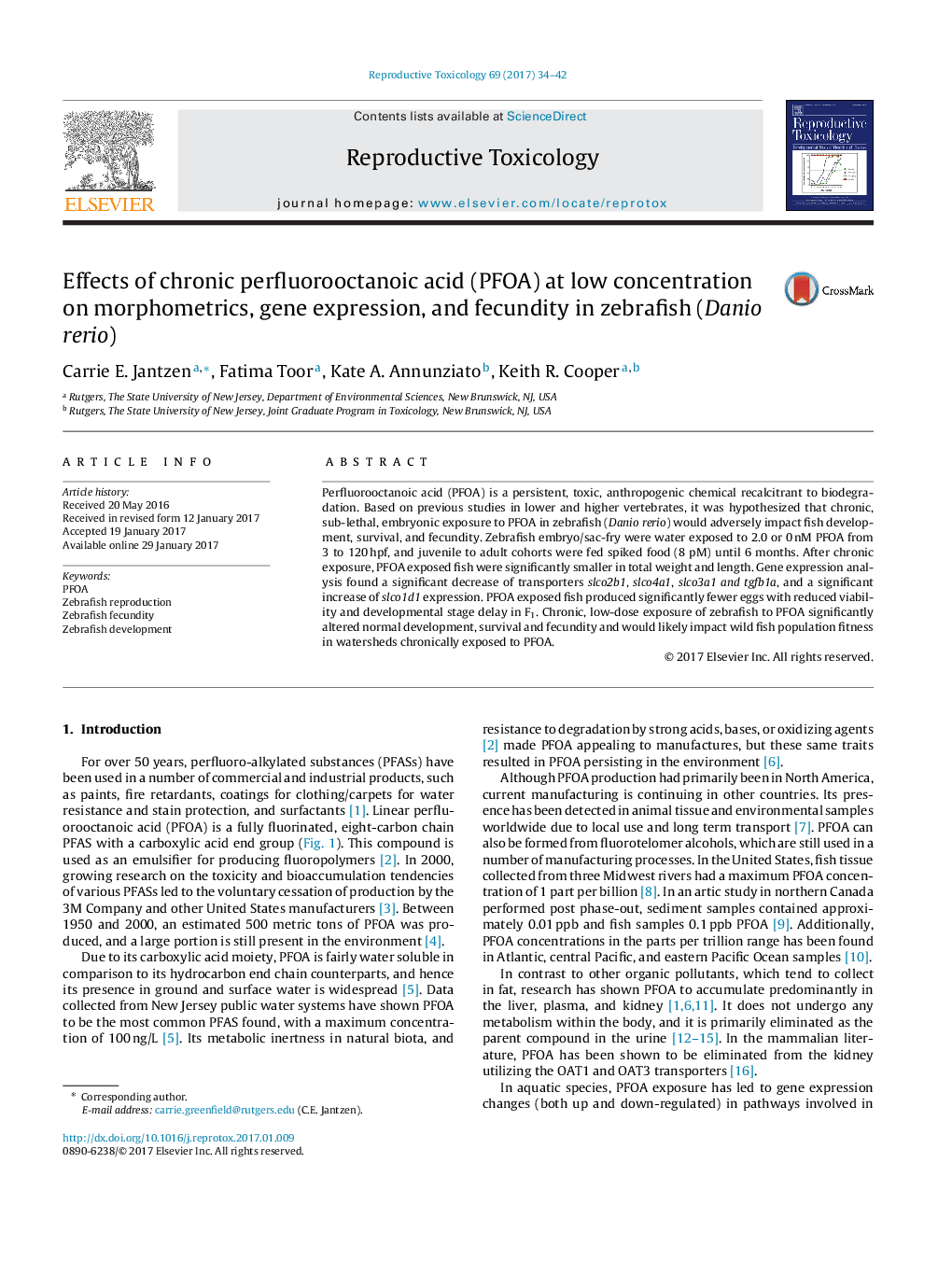| Article ID | Journal | Published Year | Pages | File Type |
|---|---|---|---|---|
| 5561578 | Reproductive Toxicology | 2017 | 9 Pages |
â¢Zebrafish exposed to PFOA long-term had detrimental effects in growth fecundity.â¢Offspring of zebrafish long-term exposed to PFOA were delayed in early development.â¢Organic anion transporter genes were altered in expression after long-term PFOA exposure.
Perfluorooctanoic acid (PFOA) is a persistent, toxic, anthropogenic chemical recalcitrant to biodegradation. Based on previous studies in lower and higher vertebrates, it was hypothesized that chronic, sub-lethal, embryonic exposure to PFOA in zebrafish (Danio rerio) would adversely impact fish development, survival, and fecundity. Zebrafish embryo/sac-fry were water exposed to 2.0 or 0Â nM PFOA from 3 to 120Â hpf, and juvenile to adult cohorts were fed spiked food (8 pM) until 6 months. After chronic exposure, PFOA exposed fish were significantly smaller in total weight and length. Gene expression analysis found a significant decrease of transporters slco2b1, slco4a1, slco3a1 and tgfb1a, and a significant increase of slco1d1 expression. PFOA exposed fish produced significantly fewer eggs with reduced viability and developmental stage delay in F1. Chronic, low-dose exposure of zebrafish to PFOA significantly altered normal development, survival and fecundity and would likely impact wild fish population fitness in watersheds chronically exposed to PFOA.
